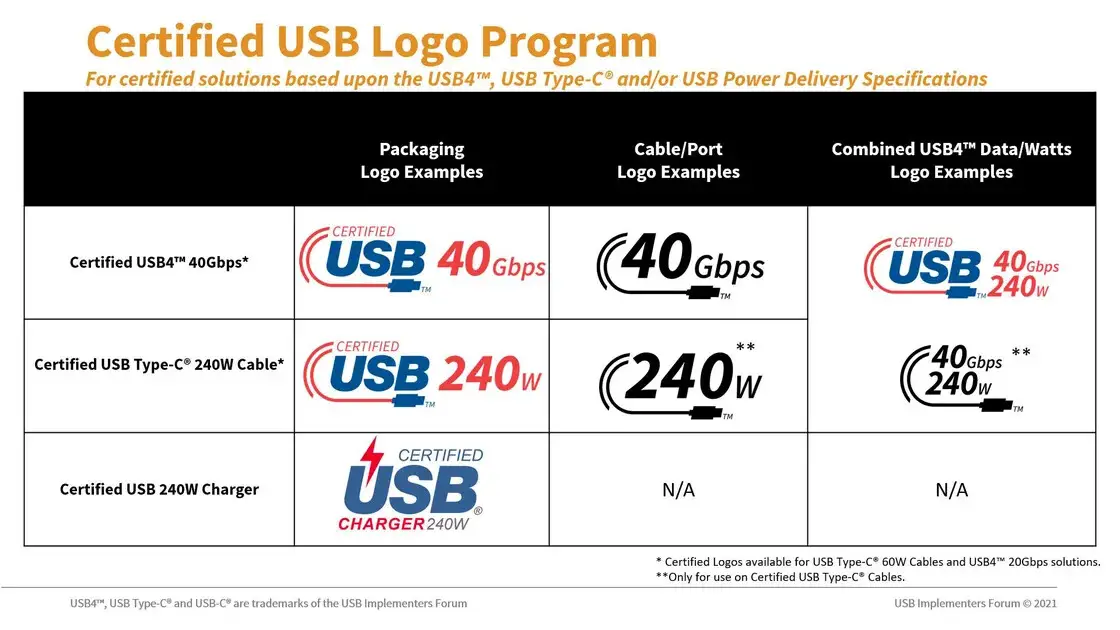The European Commission recently announced that it will pass relevant laws and regulations to establish a universal charging solution for all related devices. USB Type-C will become the standard interface for all future electronic devices such as mobile phones, tablets, cameras, earphones, portable speakers, and handheld game consoles, and fast charging technology will also be unified.
In addition, the USB-IF Association officially released the USB Type-C v2.1 standard specification, which increases the power supply of the highest 20V/5A under the PD protocol to 48V/5A, that is, from 100W to 240W. In the future, most electronic devices including gaming notebooks can be powered by USB cables.
For consumers, a uniform standard is of course a good thing. However, it also raises another question, that is, how to quickly and easily let users understand whether the cables, chargers, and corresponding interfaces they use can meet the charging or power supply requirements of supporting equipment. To this end, the USB-IF Association has brought a new USB certification mark to help consumers buy suitable cables and chargers. At present, the wires and chargers on the market are rather chaotic, and many products do not comply with the relevant USB specifications.

According to
The Verge report, in the new USB certification mark, the first certification mark is used to identify devices that support 40 Gbps. Although USB 4 and Thunderbolt 3 are very similar, the cable requirements are not exactly the same. At the same time, USB 4 overlaps with Thunderbolt 4 in some aspects. The second certification mark is used to identify wires that support the 240W power supply. It is understood that the new wires will use a new E-marker chip. Since the USB-IF Association only provides 60W and 240W certification marks, this indicates that wires exceeding 60W will use the same E-marker chip. The last one is the certification mark of the 240W charger, which is not necessarily helpful to consumers because it is only used on the packaging.






